Long-term Studies
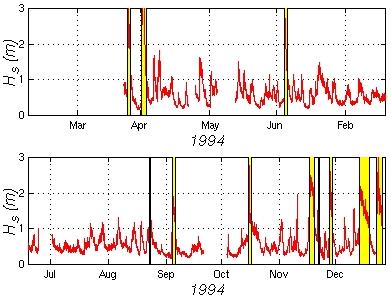
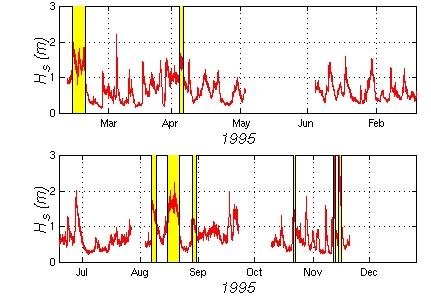
1994
Progressive trajectory plots of sediment transport
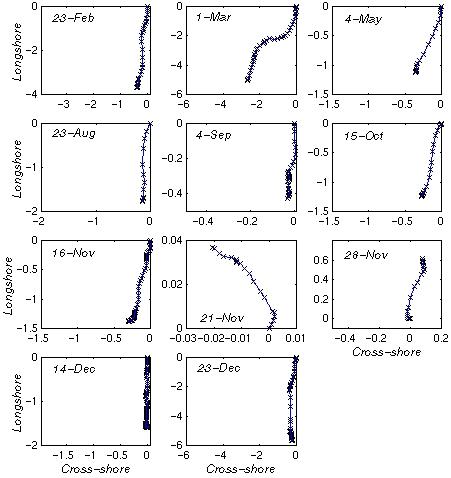
1995
Progressive trajectory plots of sediment transport
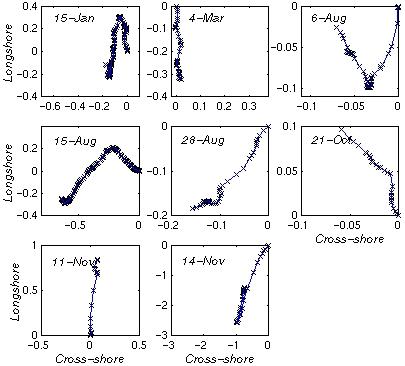
Wind and current averages over selected events.

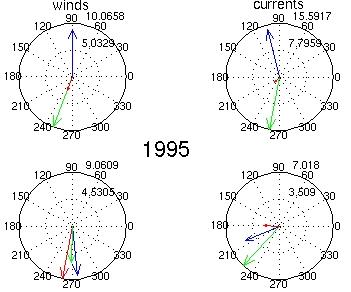
Conclusions
ACKNOWLEDGMENTS
The first author was funded through the Office of Naval Research/Augmentation Awards for Science and Engineering Research Training. Both authors were funded through NOAA's National Undersea Research Program and the Office of Naval Research. Both authors would like to thank Drs. James Irish, James Lynch and Peter Traykovski of WHOI for providing their ripple geometry and sediment concentration data.REFERENCES
Glenn, S. and W. D. Grant, 1987: A suspended sediment corrrection for combined wave and current flows. J. Geophys. Res., 92, 8244-8246.Gross, T. F., A. E. Isley and C. R. Sherwood, 1992: Estimation of stress and bed roughness during storms on the Northern California Shelf. Cont. Shelf Res., 12, 389-413.
Hill, P. S., A. R. M. Nowell and P. A. Jumars, 1988: Flume evaluation of the relationship between suspended sediment concentration and excess boundary shear stress. J. Geophys. Res., 93, 12,499-12,509.
Villaret C. and J. H. Trowbridge, 1991: Effects of stratification by supended sediments on turbulent shear flows. J. Gephys. Res., 96, 10,659-10,680.
Wikramanayake P. N. and O. S. Madsen, 1991: Calculation of movable bed friction factors. Technical report DACW-39-88-K-0047. Technical progress report for the Dredging Research Program. U.S. Army Corps of Engineers, Coastal Engineering Research Center, Vicksburg, MS, 105 pp.